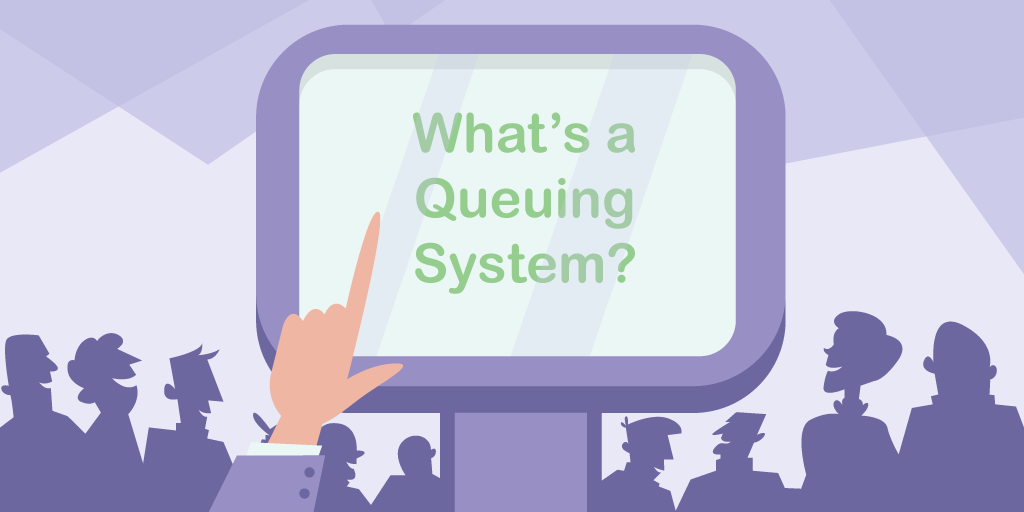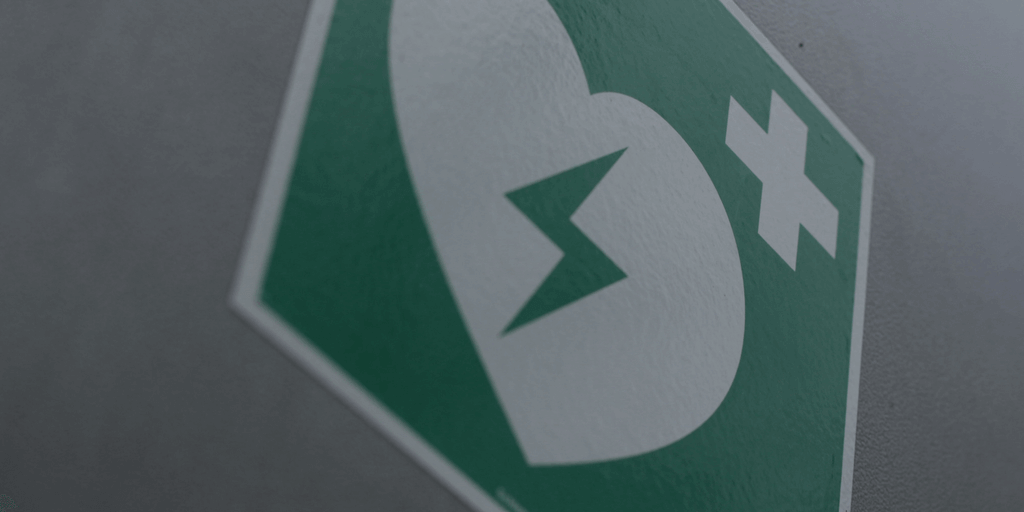One of the more popular search queries is, "Is it queue or que?".
Like with all disciplines, there is a specific language to queuing. Not everything can be solved by using a spell-checker, sometimes it pays to learn the correct terminology and spelling.
The thing is, we've talked so much about queues, but not enough about the word itself — "queue".
Where did this word come from? How do you pronounce it? What's the correct definition and meaning?
This article will not only answer all of these questions but also introduce you to the concept of the language of queuing.
So take out your pencils and your notepads, it's time to get learning.
The etymology of “queue”
You’re not alone in thinking that “queue” is a strange word, especially for the English language. It has four vowels but is pronounced exactly as a single letter — Q [kyu].
So where did “queue” come from?
The word "queue" in its intended meaning (“a line of people”) dates back to 1837. More likely, “queue” comes from the Old French “cue” or “coe”, which means "tail". Compare this to its Latin equivalent — “coda” or “cauda” — with the same meaning.
At first, the word “queue” was used to describe tails, especially tails of heraldic beasts. Starting from the 16th century, “queue” became associated with a line of dancers.
Finally, almost three hundred years after, it became synonymous with a line of people.
“Queue” also has an alternative definition of “braid of hair hanging down behind”. It is a typically male-worn hairstyle that is associated with Native Americans but was also mandatory in the Prussian Army.
British soldiers in the 18th century wore their hair in queues — pulled-back single tails tied down with a ribbon. In 1800, queues were discontinued in the British Army, while the Royal Navy sailors continued to style their hair until 1820s.
Sadly, unlike queues-as-in-hairstyle, queues-as-in-waiting-lines proved to be more impervious to time, and they still remain a part of our lives.
Spelling It Out: The Correct Use of “Queue”

Which spelling is correct: queue, que, cue or Q?
You wouldn’t believe how many people out there are searching for “que management system”, “cue management software”, or even “q management”.
On the off-chance that you’re one of the people who can't remember the correct spelling, here's a short version: it's spelled 'queue'.
But let’s go over everything from the beginning.
First of all, the “queue” versus “cue” debate. “Cue”, although similar to the Old French word which gave us “queue”, is another term entirely.
It's common for people to mix up these two terms because they are homophones, i.e. they sound the same when you pronounce them. It’s the same problem with their / they’re / there.
What does "cue" mean? If you’ve ever played pool, billiards or snooker, you will know that the term “cue” refers to a rod used for hitting balls.
(Guess “cue management”, in this case, means dusting off your pool cue collection.)
Alternatively, “cue” also means a hint or a signal for something to happen. To help you remember the difference between the “cue” and “queue”, take a look at this quote from Keeping Time by Stacey McGlynn (2010):
Daisy, sensing that if she didn’t hightail it out of there right behind the trim man with the trim laptop, the beefy-headed man would run her right over. Gathering her stuff in her lap. Not missing her cue to join the queue.
Next up, “que”. At first, it seems perfectly suited for our modern times — a snappy, abbreviated form of a word that already has two too many vowels.
In actuality, when you’re searching for “que management”, you can be mistaken for a person interested in administration of Quebec, of which “que” is a shortened form.
(Also, “qué” is a Spanish word for “what”. But that’s just us showing our linguistic versatility.)
Lastly, there’s “Q”. Q is, of course, just a letter and not a separate term.
Many queue management solutions, Qminder included, use the letter Q in their names. This is done for brevity’s sake and is in no way an endorsement of tearing down the pillars of the English language.
Hope this has helped clear up some confusion.
The correct spelling: "queueing" vs. "queuing"

“Queueing” versus “queuing” is a common point of linguistic contention.
The long and short of it is that both spellings are correct. This may sound anticlimactic, but “queueing” and “queuing” are simply alternative spellings of the gerund (-ing) form of the same word.
That is not to say that there is no difference between them at all.
The vast majority of queueing theory researchers use "queueing." The complete list of these researches would take a long time, so I’ll only mention J. W. Cohen, T. L. Saaty, N. Prabhu, and B. Gnedenko.
Also, “queueing” is mainly used in British English. For example, the Guardian and Observer style guide categorically states that it’s “queueing, not queuing”.
“Queuing” is mostly an American invention, and is recognized as such by most dictionaries and spell checkers.
Why the need for different spellings at all?
The most obvious problem with the former spelling ("queueing") is that it has five vowels in a row. For comparison, there’s only one word in the English dictionary that has more consecutive vowels — EUOUAE.
It may sound like a cry of a man who dropped a hammer on his toe but doesn’t want to wake anyone up, but it’s actually a mnemonic device to help memorize the sequence of tones in medieval music.
(Cue a shooting star from the NBC, with the words “The More You Know”.)
Apart from “queueing”, there are only seven more words with that many vowels in a row: AIEEE, COOEEING, MIAOUED, ZAOUIA, JUSSIEUEAN, ZOOEAE, ZOAEAE.
If you’ve never heard of either of these words, you’re not alone. A common element you might have spotted is that all of these words look made-up and are awkward to write down.
That is not to say that the use of “queueing” should be rejected, but in the interest of brevity, we prefer to spell it as "queuing".
Which terms to use: “on line” vs. “in line”
Another great debate is whether you wait on line or in line.
Again, it’s just a one-letter difference that causes a lot of strife. It’s like your average pop / soda / coke debacle, except nerdier.
(I’m a proponent of a “fizzy drink” myself, by the way.)
The preference for either of these wildly different terms becomes especially apparent in times of voting, when people are tweeting how they’re waiting on/in line to vote.
Which one is correct? Is it “on line waiting” or “in line waiting”?
“On line waiting” is an example of so-called regionalisms — geographically-based idioms. Whereas most people in the States get and stand in line, New Yorkers get and stand on line.
Deborah Tannen, a New York-born sociolinguist, identifies “on line” as one of many so-called New Yorkisms. In a country as big as the United States, even neighboring cities can have enough cultural differences to make normal-day conversations confusing.
Despite it being something associated with New York, “on line waiting” has travelled beyond the East Coast. Dialect Survey conducted a research on how localized the usage of “on line” and “in line” is.
You can see the visual representation of their findings below:

Regionalisms are like airborne diseases. West Coast and the heartland now have a mild case of “on line waiting”.
This is the same map for “in line”:

You'll notice a wild contrast to the previous picture. The verdict is in: people vastly prefer to say "in line".
Out of 10,689 respondents, only 5.49% use “on line” while 88.30% use “in line”.
The Times’ style guide, which is a highly recommended read, is very categorical when it comes to the “on line” / ”in line” debate:
Few besides New Yorkers stand or wait on line. In most of the English-speaking world, people stand in line. Use that wording.
If you’ve been following our blog, you’ll know that we ourselves follow the Times’ guidelines. It's more than a gut feeling; the numbers are on our side.
The essential terminology of queue management

Reading our blog, you might’ve noticed there’s a set of terms we tend to repeat again and again.
This has nothing to do with our lack of access to a thesaurus. We’re simply using the established terminology of queue management.
For convenience’s sake, we've separated the entire terminology into two parts: one that refers to the business side of queuing, and one that refers to queuing terms related to customers.
Queuing glossary for businesses
Service
Assistance given to customers aimed at fulfilling their need or demand. Depending on the industry, a service may come in a form of products, consultancy, expertise, medical treatment, transportation, etc.
Clerk
A person providing the services and/or managing the queues. Clerks are usually staff members with limited control over the queuing software (see other location roles).
Queue area
A place or places in which waiting occurs.
Queue length
The number of people currently in a queue. Queue length, especially its visual look, is important to attracting new customers.
Ticket
A separate case of a served customer, as shown in the visitor history. Depending on the context, ticket may also refer to the obsolete ticket queue management technology.
Wait time
The time needed before a customer is being served. Wait time can be characterized as actual (i.e. based on exact time measurements) and perceived (i.e. based on internal perception of time). Along with queue length, wait time is an important metric to attracting new customers.
Service time
The time required to serve a customer. Despite being a separate term, service time may be considered a part of wait time by some customers.
Idle time
The time spent by a server not providing the services to customers.
Queuing glossary for customers
No-show
A customer who reserves a service in advance but neither uses nor cancels the reservation. No-shows are a big problem in healthcare, where they affect the quality and timeliness of services.
Balking
A customer leaving without waiting in line. Balking behavior is one of three common customer behaviors in queue areas.
Reneging
A customer entering the line but later deciding to leave it. Reneging behavior is one of three common customer behaviors in queue areas.
Jockeying
A customer entering one line but deciding to switch to another. Jockeying behavior is one of three common customer behaviors in queue areas.
Queue-jumping
The action of switching to a line after entering another. Queue-jumping is a telltale sign of poor queue management.
First In, First Out
The principle of serving the customer who was the first to join a queue (i.e. waited the longest). First In, First Out is called FIFO for short, and it is a characteristic of the queue discipline.
Last In, First Out
The principle of serving the customer who was the last to join a queue (i.e. waited the shortest). Last In, First Out is called LIFO for short, and it is a characteristic of the queue discipline.
Priority
A characteristic of a customer that allows them to be served out of order. When not effectively communicated to other queue participants, priority queuing can be seen as a sign of unfair queues.
Phew, that was a worthwhile lesson!
Now, when you sign up for a 14-day free Qminder trial and start seeing "wait time this" and "ticket that", you'll be at the top of your game.
Also, you'll be damn near unbeatable in Wordle.





![The Ultimate Waiting Room Checklist: 65+ Ways to Enhance Your Space [PDF]](/static/img/cms-blog/9Nb3bvvnMqH4j9SnqQLtw/improve-waiting-room-checklist.png)
